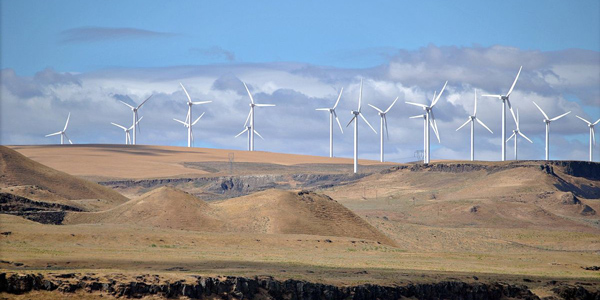By Jason Fordney
California electricity suppliers have met the state’s 25% renewable generation requirement, in many cases exceeding it substantially, state regulators said.
The state’s three large investor-owned utilities have also signed contracts with renewable suppliers necessary to exceed the requirement that they meet 33% of customer energy demand with renewables by 2020, the California Public Utilities Commission said in its Renewables Portfolio Standard report for 2016, issued Nov. 13. The commission is required to submit quarterly and annual reports to the state legislature on the industry’s progress in meeting RPS goals.
Retail electric sellers were required to meet 25% of load with RPS-eligible resources by the end of 2016. Pacific Gas and Electric reached about 33% renewables, Southern California Edison about 28% and San Diego Gas & Electric nearly 43%.
An aggregated forecast projects the utilities will meet the 2030 requirement of 50% by 2020, according to the PUC, which administers the RPS with the California Energy Commission. The PUC’s role includes setting policies for implementation, reviewing RPS procurement plans, reviewing IOU contracts and enforcing compliance.
PUC Commissioner Clifford Rechtschaffen said: “Our utilities are exceeding the goals we put in place for them. Costs have continued to decline, and reliability has not been compromised in any way. California’s successful program offers lessons for other states interested in advancing clean energy policies.”
The program requires IOUs, community choice aggregators, electric service providers and publicly owned/municipal utilities to procure renewables to reduce greenhouse gas emissions, stabilize electricity rates, diversify energy resources and contribute to reliability.
The state’s five CCAs and various multijurisdictional utilities report they are compliant with RPS requirements and expect to meet or exceed the 33%-by-2020 requirement.
California’s latest RPS requirement of 50% renewables by the end of 2030 was set in SB 350, signed by Gov. Jerry Brown in 2015. The State Legislature is getting heavy pressure from environmental groups to pass a 100% zero-carbon bill that would include nuclear and large hydro in the last 40% of the requirement. Lawmakers are due to take up the legislation in January. (See CAISO Regionalization, 100% Clean Energy Bills Fizzle.)
The state’s IOUs are currently over-procured for renewables and held no annual solicitations in 2016. But they were required to procure renewables through other programs to meet the future RPS and other state policy goals. These include the Renewable Auction Mechanism, Bioenergy Renewable Auction Mechanism, Renewable Market Adjusting Tariff and Bioenergy Market Adjusting Tariff.
IOUs are also required to comply with “least-cost, best-fit” methodology to ensure the most cost-effective resources are being procured. The PUC plans to reform the methodology.
It said contract prices for solar photovoltaic fell 77% between 2010 and 2016 to an average of $29.17/MWh, and IOU contracts for wind fell by 47% to $50.99/MWh. This is because of the rapid expansion of the market and decreasing technological cost.
The report also lists challenges in meeting RPS requirements, including uncertainty in IOU load forecasts, curtailment of solar due to oversupply at certain periods, stranded costs that could end up with remaining IOU customers as other customers migrate to CCAs, and significant terminations in the Renewable Market Tariff program — a feed-in tariff for small, distributed renewable energy technologies.





